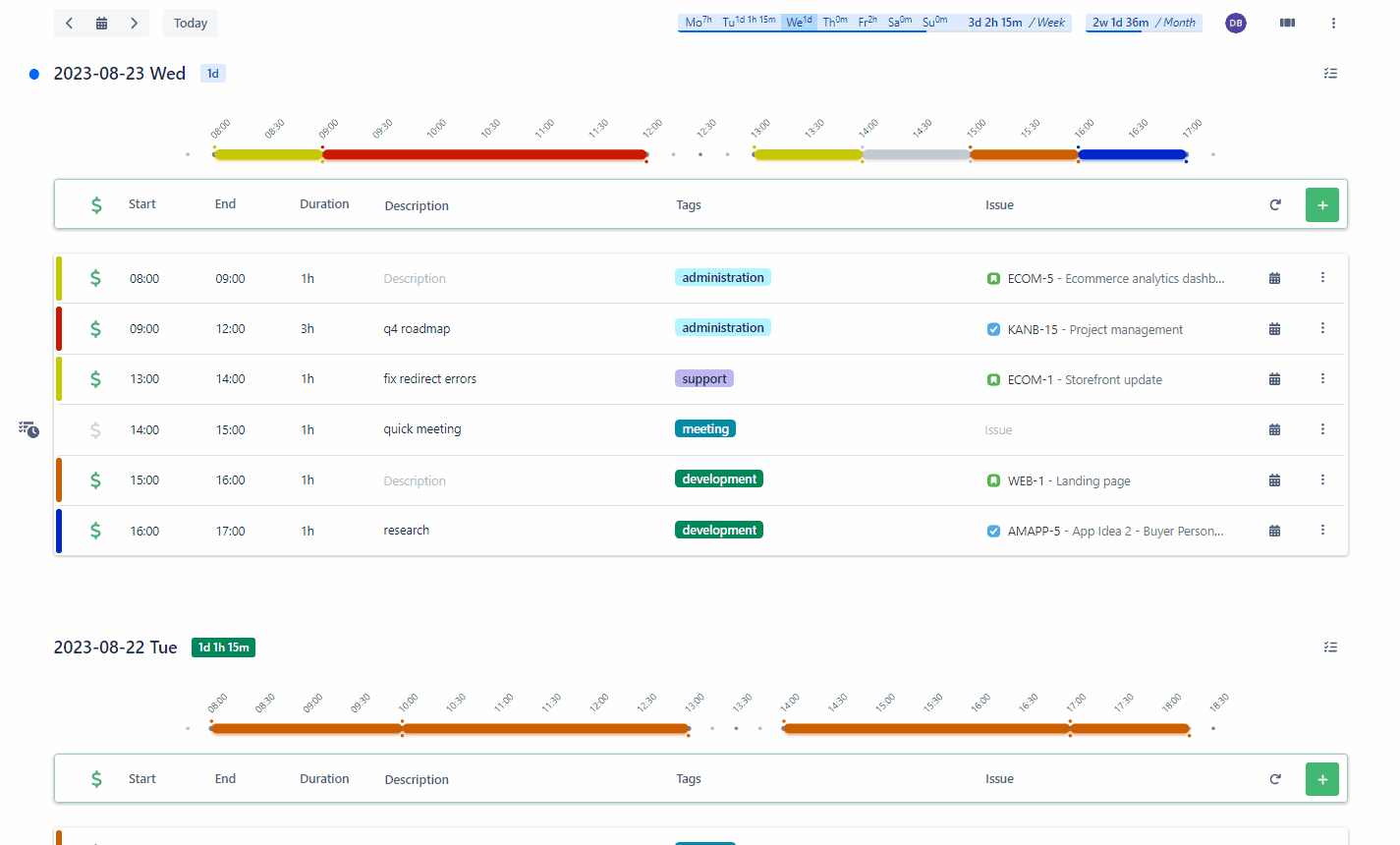Timeline
Introducing a Timeline view, that features quick worklog editing and planning!
We've modernized and optimized the time logging experience to make it fast, convenient, and more familiar with the experience you have with different time tracking SaaS solutions!
Navigation and interface
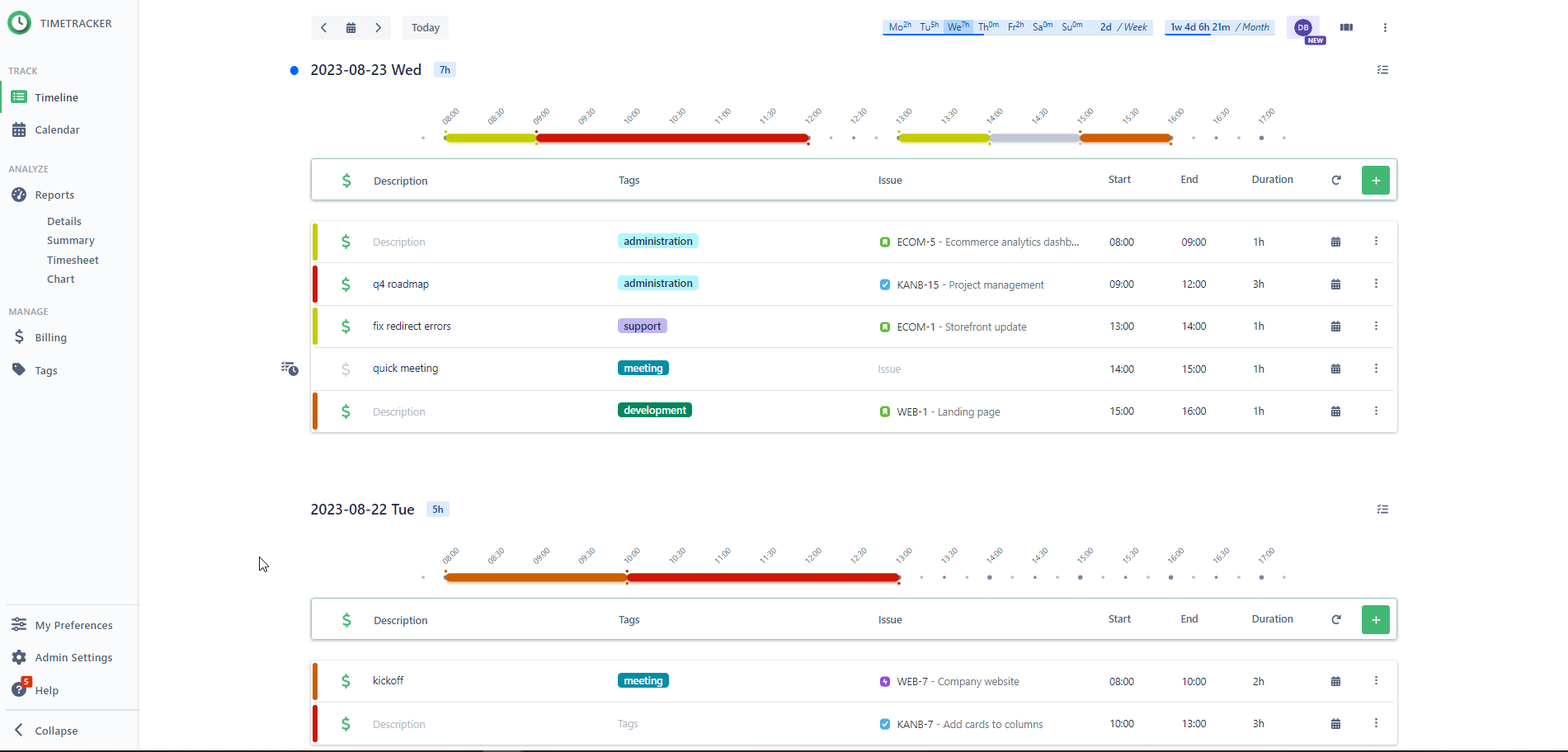
By default the Timeline interface displays today as the starting day on top, marked with a blue circle to the left of the date. Previous days are displayed below, loading more days as you scroll down, indefinitely.
You can select a different starting day using the date picker in the upper left corner, or jump forward and backward a day using the arrows.
Daily, Weekly and Monthly summaries
Next to each date, you can see the total number of hours logged for the day. The daily summary is only displayed, if there’s at least one worklog, with a duration for that day.
In the upper-right corner, you can see the times logged for the given days of the week, the week, and month of the starting day (today by default). You can also see your weekly and monhtly progress as a blue bar under these badges. Hovering over these summaries, you’ll see the expected and actual logged times for the period.
A day on the timeline
A daily timescale, a “new worklog row,” and the already recorded worklogs are visible for each day. Each row represents a separate worklog, containing the worklog’s description, Issue, start/end times and duration. Any of these fields can be left blank, leaving you to specify them later. (We’ll get back to this feature in the “Planning your worklogs” section further below.)
The daily timescale
The timescale displays the time period between your configured working hours, with your worklogs rendered on it. If you record worklogs outside the default working period, it will expand automatically, so those worklogs will fit in as well.
Each worklog which at least has a start time and a duration is displayed as colored bars on the scale. The bar’s color is automatically derived from the project of the worklog's assigned Issue, or gray if an Issue isn’t assigned yet. This color is also visible on the left edge of each worklog row.

You can also enable an option in the … menu to hide the daily tracker above the days and focus on the worklgos data only. This can be helpful for users that only useing the duration field to log their work.
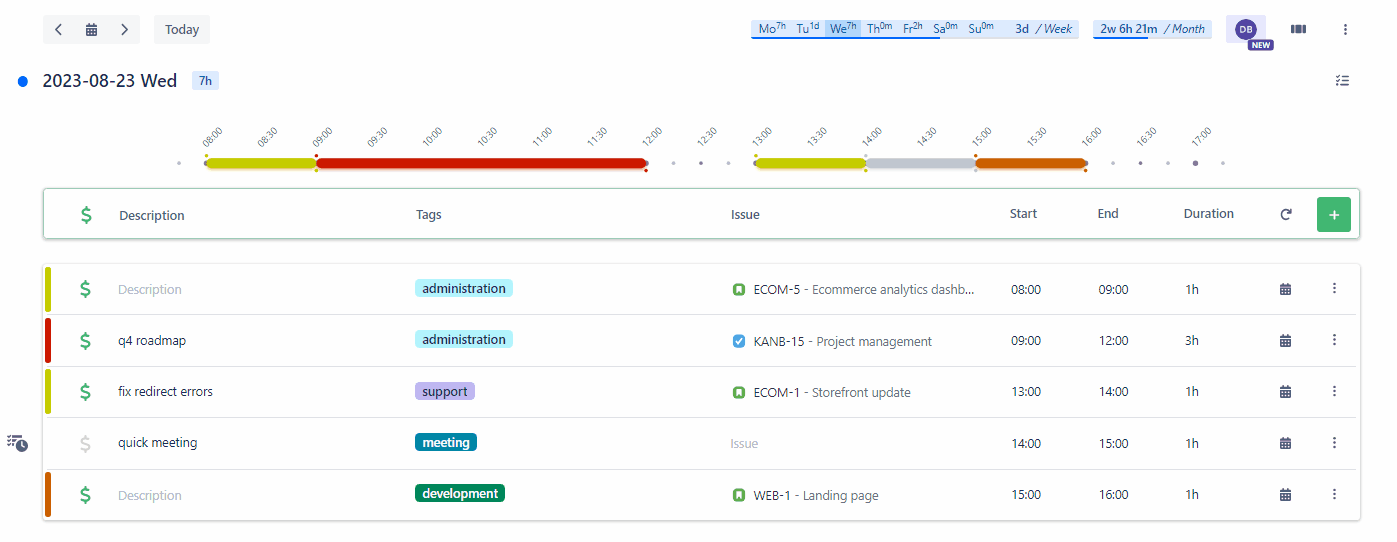
Creating worklogs
There’s a fixed row right below the timescale, highlighted in green. This is the “new worklog row,” which you can use to record worklogs for that day.
Manual mode
Recording worklogs can now be done on this single line, letting you fill in the usual fields, such as description, issue, start and end times. You can quickly jump through these fields with the TAB key. After filling in the fields you need, just click the green “+” button, or press Ctrl+Enter to create the worklog.
We’ve also improved the way you type wall clock times in the start and end time fields, making them much more convenient to fill in now. For example, if you want to specify 10:00 AM, you can type it several different ways, such as “10:00”, “1000” or even just “10”, whereas say 10:15 PM can be typed as “22:15”, “2215”, “1015 pm” or just “1015p”. Feel free to experiment to find out which form is more convenient for you!
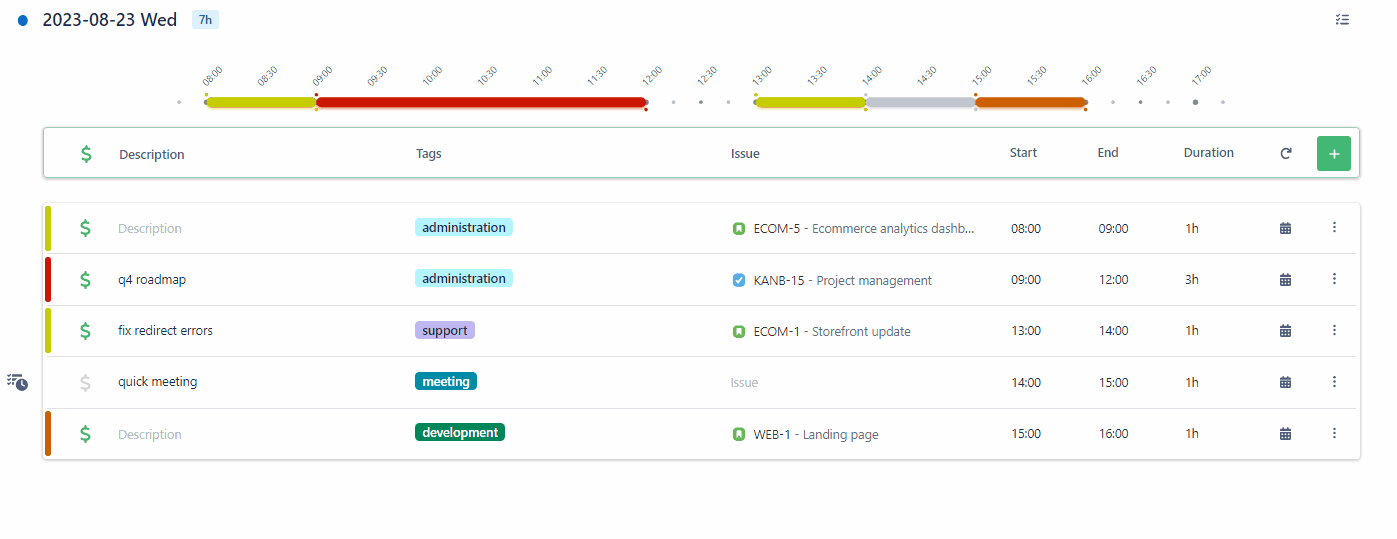
Pre-fill input fields
You can enable the auto-fill option in the … menu. With the option enabled, the Start time field will be pre-filled with the end time of the previous worklog, and the end time will default to the exact present time to facilitate a quick and continuous work logging experience. Both time input field suggestions now also contain exact times, not just rounded units and the current time.
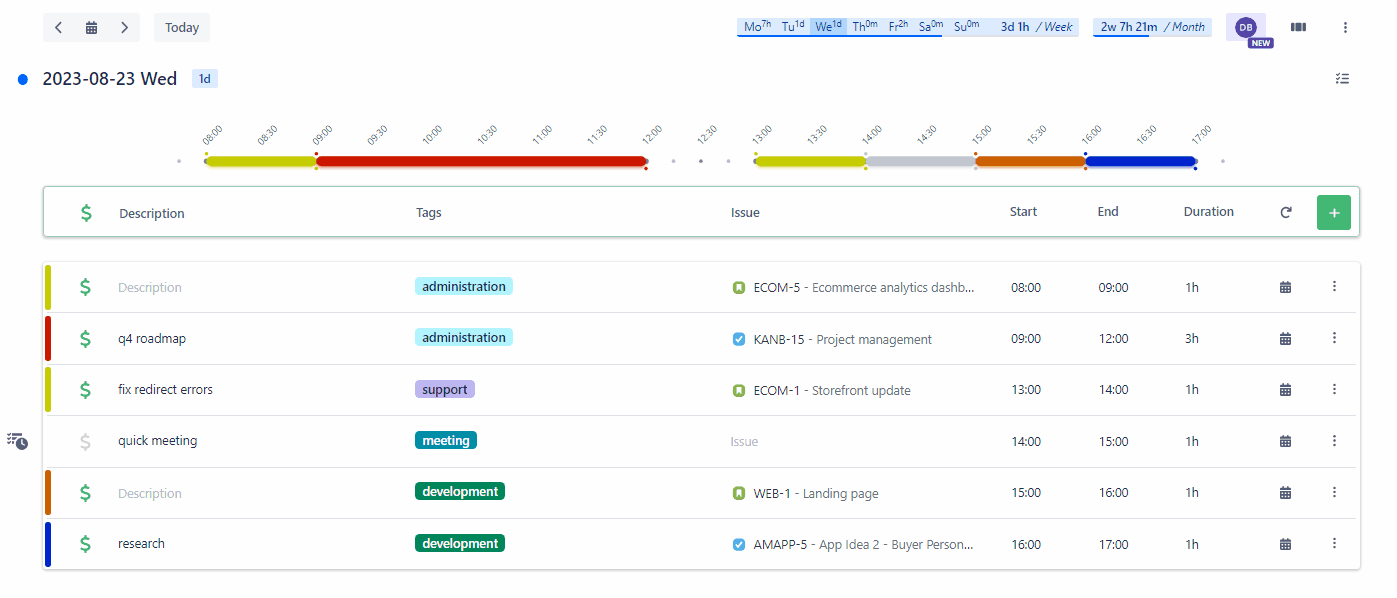
Timer mode
You can switch to this mode using a toggle button on the timeline, which is available next to today's input field. You can start the timer with the “play” button. To stop it and create a worklog, click on the “stop” button. Using the "X" (Reset) button, you can stop a running timer without creating a worklog, essentially discarding it.
The Timeline offers additional flexibility. You can start a timer without associating it with a specific issue or any other data. This functionality serves as a quick logging tool, helping you record spent time even when the details of your work may be subject to change.

With a running timer, you can still record worklogs manually
When you have a timer running, you can still record a worklog manually, just switch back to manual mode by clicking on the same mode switch button. You can switch back to timer mode at any time, and you can even close the page and return later. The timer will continue to measure time in the background.

You can continue your previous work
Another convenient feature is that you can start a timer with the details of a previous work, by pressing the green “play” button to the right of any existing worklog. In this case, the Issue, Description, Billing status and the Tags of the existing worklog will be pre-filled for you, and the timer will start immediately on it.
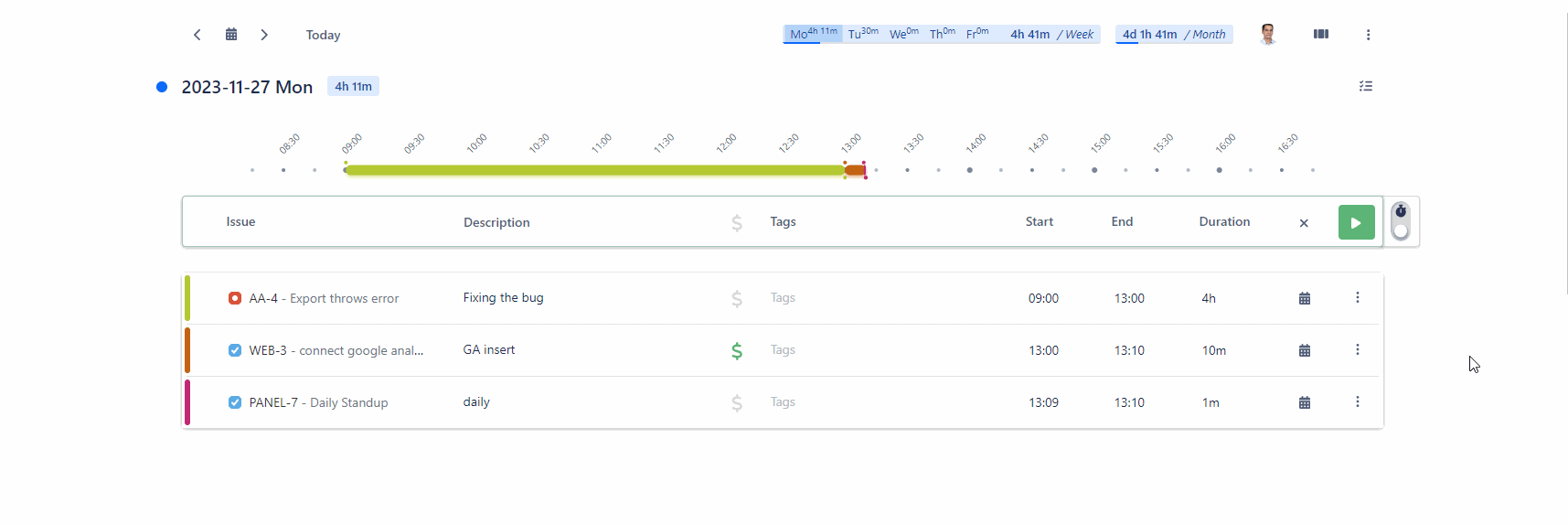
Display and log work with only Duration field
You can also enable an option in the … menu to only display the Duration input field on the worklogs. In this case, every created worklog will be logged with the configured default start time.
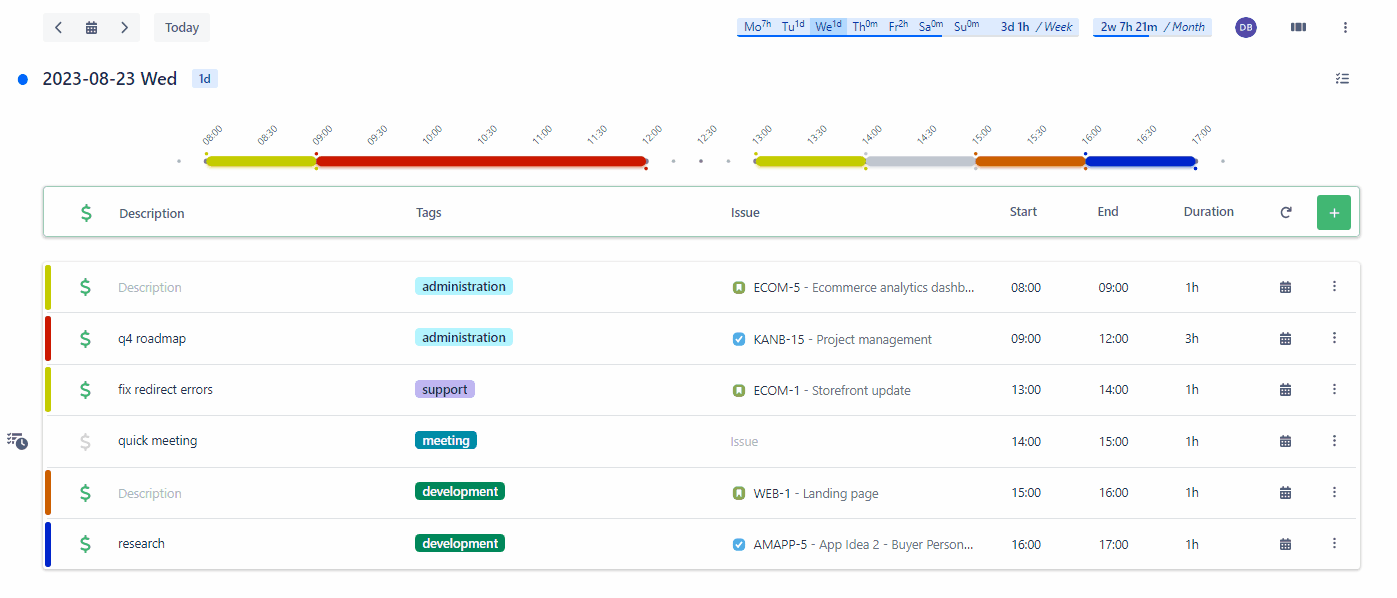
Repeating worklogs
You can administer regular tasks as recurring worklogs in advance. Worklogs will be created for all working days between the date you’re adding the worklog on and the specified end date. Weekends and certain dates, like configured holidays will be excluded.

Worklog editing and actions
On each worklog row, just click in the field you wish to edit and type away! Your changes will be saved immediately! The Description field is multiline, press Shift-Enter to start a new line.
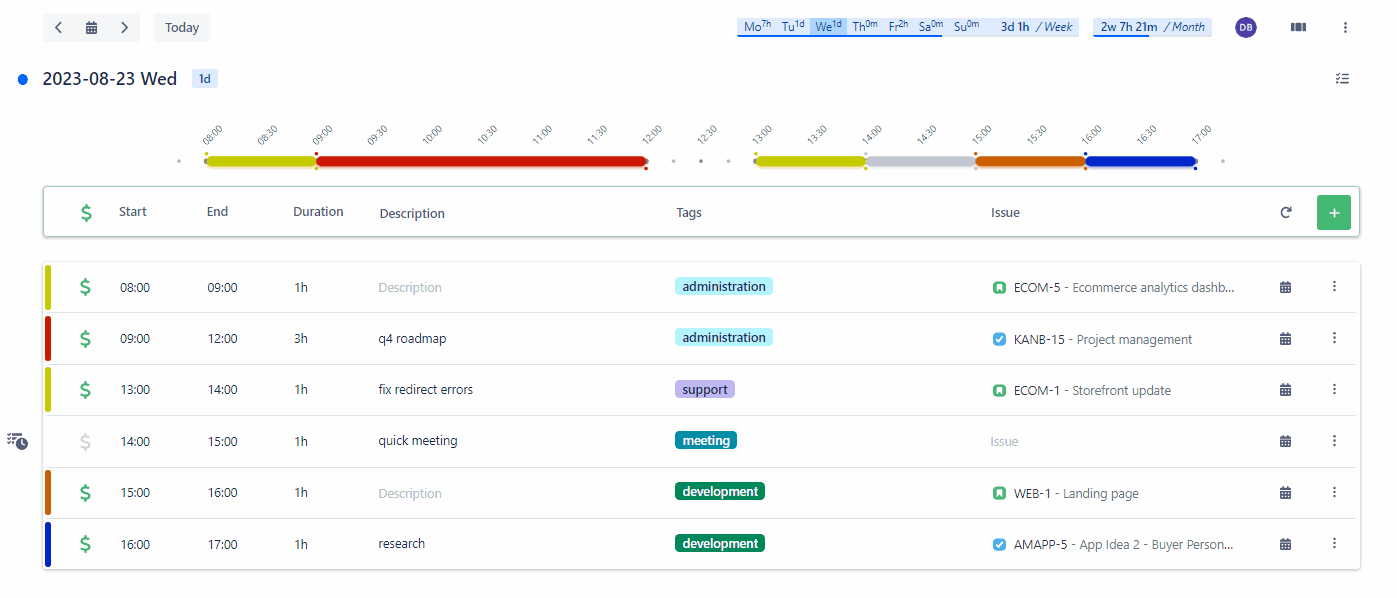
Move a worklog
You can move a specific worklog to a different day by selecting the target day using the date picker on the worklog row.

Copy to another date
You can use the “Copy to” option to quickly copy your worklogs to another date. Perfect for recurring tasks or correcting entries.
Duplicate, Split and Delete a worklog
You can perform additional actions on each worklog using the options under the “...” menu item on the right:
With Duplicate, you can create a copy of a worklog on the same day with the same parameters.
Using Split, you can split a worklog into two worklogs, cut at the duration you specify from the beginning of the worklog.
Clicking Delete, will remove the worklog permanently after you confirm.

Bulk update worklogs
The Timeline provides the possibility to edit or delete several worklogs at once. You can access the bulk update functionality by clicking on the “Bulk update worklogs” button found in the rightmost corner of each day header.
With the bulk update mode active, you can now select multiple worklogs within a single day, and also across multiple days. With all desired worklogs selected, click on the “Edit selected” button and change any fields you’d like. After approving the changes, they will be applied to every selected worklog at once.

Planning your worklogs
The Timeline not only provides a more elegant and easy-to-use interface, but it also gives you a completely new and unique time tracking option in Jira.
With the Timeline you can now create partially finished worklogs, leaving the description, start time, duration, or even the Issue to specify for later. It provides a convenient way to record your work during your day as quickly as if you were taking notes in a notebook. Letting you to clarify later or link it to an Issue. Having this, you can also plan your future working times and tasks, which then you can easily convert to actual real worklogs by assigning an Issue to them later.
Planned worklogs won’t be present in Jira. They’ll be converted automatically to a Jira worklog, when you specify all necessary attributes for them: start time, duration (or end time), and a selected Issue. A description will be also required, if your Timetracker is configured with mandatory worklog descriptions. The planned worklogs (which aren’t synced to Jira) will be marked with an icon on the left of the rows.
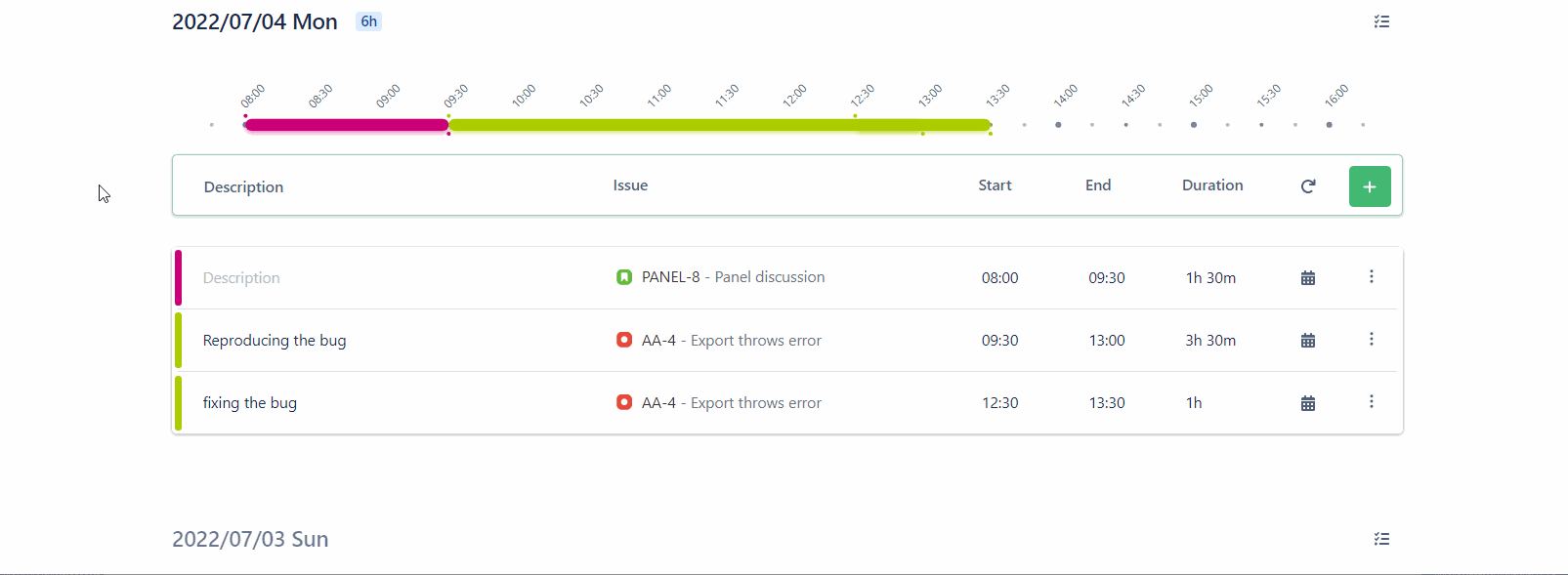
Turn off planning mode
We introduced a new “Allow users to plan their time” Administrator settings in the “Global Settings - Loggin Time” configuration page.
If enabled (default), users can plan their time and it is not necessary to fill in all the fields. All worklogs remain planned until the user enters all the information required to create a Jira worklog. When this happens, the worklog is automatically saved to the Jira under the selected Issue as a worklog.
If disabled, users can only create Jira worklogs and cannot omit any of the fields as they can in planning mode.
Display settings
In the upper right corner, at the top of the page, you can find a “…” menu where you can access some customization options.
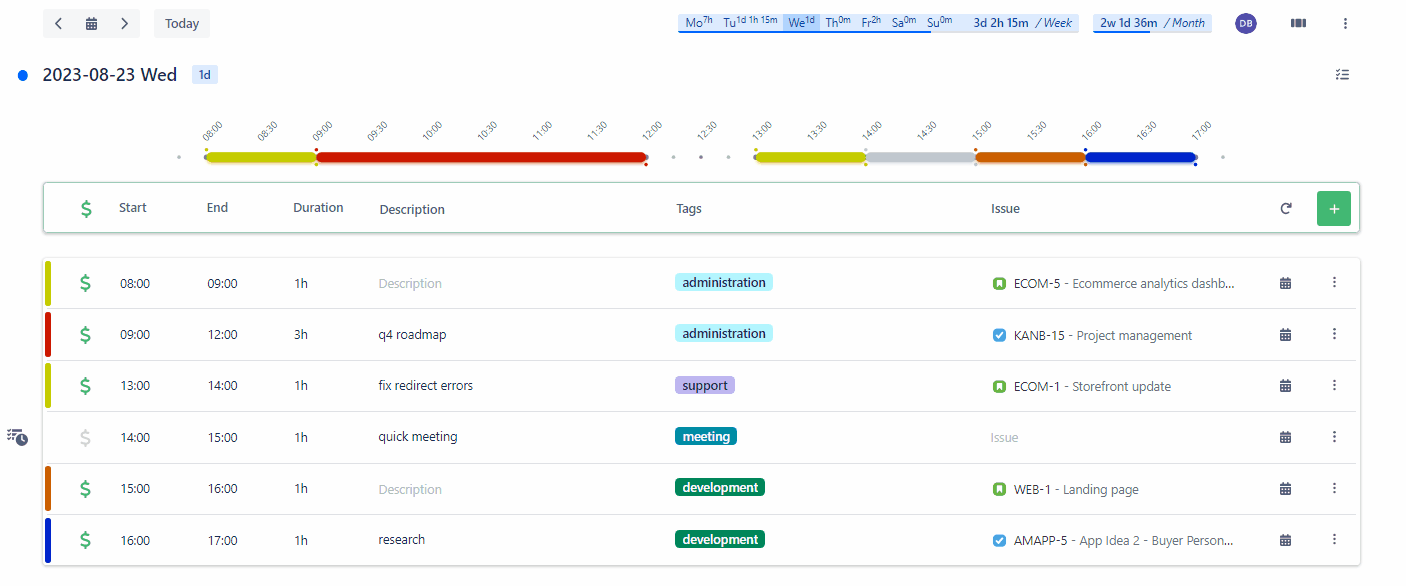
Sort by start time
You can set if you want to see your worklogs displayed in ascending or descending order within each day.
Working hours
This is the same setting which you can find on the Calendar page. You can set your usual daily working times here. This time period will be the default interval which the timescales show for each day.
Worklog view
Display planned work only
By selecting “Display planned work only”, you can quickly filter down your planned (or unfinished) worklogs, so you can easily find and finish them.
Display daily timescale
You can now hide the daily tracker above the days and focus on the worklgos data only.
Display Weekends
Option to hide or display weekends on both the Calendar and the Timeline pages.
Input fields
Enable auto-fill input fields
With the option enabled, the Start time field will be pre-filled with the end time of the previous worklog, and the end time will default to the exact present time to facilitate a quick and continuous work logging experience.
Personalize your log work screens with customized field order and visibility
This enhanced menu offers greater flexibility by providing the ability to select which fields to display or hide, and adjust the order of their appearance to suit your preferences.

View other user’s timeline
You can switch to another user’s calendar by clicking on the User icon. This will reload the timeline with that user’s worklogs - so you can see precisely what they working on and when.
Please note that at the moment you can only view other’s timeline. Creating and editing worklogs for other users is on our Feature Roadmap.
